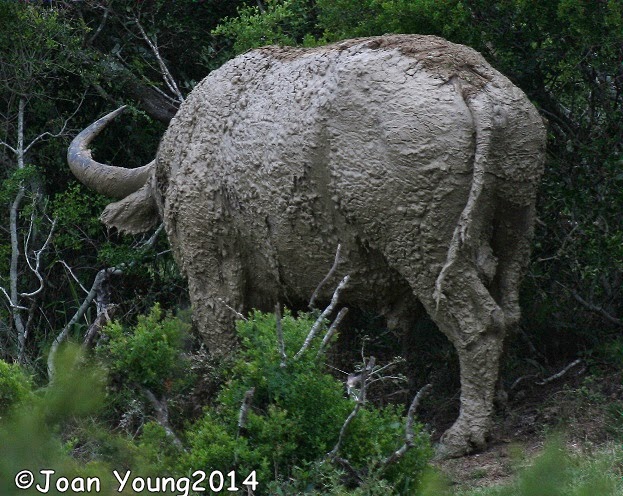Addo Elephant National Park
We
spend a night in Kirkwood and went on to Addo Elephant National Park. This is
our second visit there and we looked forward to the week we were going to spend
there. Click here to see my previous post on the accommodation etc
We are
eager to get into the Park as we loved it here last time. The shadows were
still long when we went past one of our favourite watering holes but not much
was stirring.A Black-backed Jackal is scarcely visible in the light and it looks as though he might have found something to eat in the long grass.
A yellow Aloe lends a bit of bright colour to the drying vegetation.
We came across this Buffalo which had just got out of a mud hole. He is surely the dirtiest one I have ever seen. LOL!!
A Fiscal Shrike is hanging about on a branch waiting for it to warm up so that the butterflies and insects can come out.
This very large tortoise made me smile – it looked like he was pretending to be a rock while sleeping and hoping that no one would notice him. J
Bush Violets are small and lovely. They make a lovely show.
Laying on the side of the road was a lioness with a radio collar on. Many of the animals in the Park have them as the place is surrounded by human inhabitants and the collars will give them an indication if any get out of the boundaries.
The elephants are just the most beautiful I have come across. They are placid and calm and totally unlike those in Kruger National Park. The one day while we were parked by the watering hole, a youngish elephant came and gently put his trunk against the back of my car and I could not understand why. It was only when we got back to camp the we saw what attracted him. There were some very ripe bananas in the back which he was smelling. J
Zebra snails are as huge as my hand and this was a first time for me to see this species also. I just love going to these regions which I do not know and have not been able to get to in order to find things like this.
I do not know what this bush is called but it looks like some kind of Euphorbia. These low bushes were covered with magnificent yellow flowers.
A Boomslang had been ridden over on the road. They are one of our deadliest snakes and if a bite is not treated soon and correctly, death can occur.
Red Hartebeest are a medium-large antelope and fairly common in our National Parks.
The top highlight of our stay there for me was seeing this Rock Monitor. I have seen pretty large ones up to 2m (6’) in length but this one was about 1.5 times as large and the same girth as a crocodile. I have NEVER seen one so large!! A truly fantastic sight to see. I wonder how old it is?
















No comments:
Post a Comment